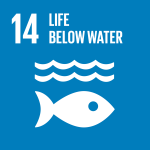Continuing with the task to restore Cuba’s natural habitats and protect its coastal communities, UNDP brings together government partners, scientists, local communities and the economic sector to scale up interventions piloted through an Adaptation Fund-financed project through a new GCF-financed project.
By Gricel Acosta
In 2017, roughly five years ago, with Cuba’s Ministry of Science, Technology and Environment (or CITMA by its Spanish acronym) we enthusiastically embarked on the adventure of preparing a funding proposal for climate change adaptation in Cuba to be presented to the Green Climate Fund (GCF). This was a top priority issue for Cuba, a small island developing state in the Caribbean.
We had several previous successful cooperation experiences on environmental issues, but our knowledge about the specific requirements of this new funding source was quite limited, and we did not quite imagine the size of the challenge we were facing. To our advantage, we had been implementing the Adaptation Fund “Manglar Vivo” project, which had begun to show promising results in ecosystem-based adaptation along the coastal areas of the provinces of Artemisa and Mayabeque. These advances provided a pathway for scale up to a larger coastal area.
A group of prominent Cuban scholars, experts in coastal marine biodiversity, climate, hydrology, social sciences, and the recently approved priorities of Cuba’s TAREA VIDA (Cuba’s National Plan for Managing Climate Change). The UNDP team was nourished by a group of international experts on topics that had not been covered until then, such as environmental engineering, technical-economic feasibility evaluations for natural solutions and environmental and social safeguards. Together we began this journey which has to date lasted 5 years, promising 30 more ahead.
To design a successful project, we visited each of the seven human settlements on the southern coast of Cuba and were able to appreciate the real effects of coastline retreat to coastal communities and ecosystems, the impact of salinization on water supply sources and the deterioration of the mangroves’ health.
Needless to say, we had many surprises. Witnessing first-hand the exchange between these renowned scientists and the communities – with each defending their position on how to best manage the climate change impacts – provided new insights on ways to bring various stakeholders together to build consensus. We learned that the best solution is the one that is socialized, analyzed and accepted by the communities considering their historical memory in managing climate extremes that have become part of their local culture.
During long hour trips from Havana to the provinces of Ciego de Ávila and Camagüey, we tried to agree on a name for our nascent project. Between enigmatic acronyms and simple concepts, the main messages became clear and finally, after an exchange with professional designers, our brand “Mi Costa. Nature Based Solutions to Climate Change,” was born.

“Mi Costa” was selected because it conveys a sense of belonging, ownership, involvement around a common cause that was made evident during consultations with communities. Green and blue hues and a beautiful infinity symbol were chosen to represent a wave trying to catch a house, or perhaps better said, a house trying to manage the wave’s impact.
Mi Costa is based on the principle of enhancing the function of coastal marine ecosystems for the protection of coastal communities to the impacts of climate change – specifically sea level rise and extreme meteorological events. The project focuses on the rehabilitation of coastal wetlands, including swamp forests and grasslands, mangroves and the hydrological flows that interconnect them to seagrasses and coral reefs. The healthy improvement of these ecosystems will favor the natural recharge of underground aquifers and support in the decrease of saline intrusion. Our solution hence was based on a comprehensive landscape vision that encompasses multiple ecosystems each interdependent.
An active effort was made to include the voice of the communities we had consulted by implementing a community-based adaptation approach. Their involvement goes beyond the traditional concept of project beneficiaries, by making them protagonists of the transformation that is required in the natural and socio-economic environment where they live. Climate monitoring will be led by the communities at the local level and the project will generate new sources of livelihoods centered around the services provided by coastal ecosystems, thus strengthening the positive relationship between coastal populations, their ecosystems and livelihoods.
This is, in fact, the main challenge and the reason for existence of the Mi Costa project: to build a new paradigm of harmonious coexistence between the population and its environment within in the context of a changing climate.
With $23.9 million contributed by the Green Climate Fund and $20.3 million committed by national entities, Mi Costa was approved on March 19 at a meeting of the GCF Board and entered into force on September 13, 2021. With the signing of the project document between the government of Cuba and UNDP on December 2, 2021, the implementation of its activities begins, conceived in support of the priorities of Cuba’s state plan to address climate change, known as Tarea Vida. The protagonists of the project will be the residents of seven settlements in six provinces on the southern coast of Cuba: La Coloma, Playa Cajío, Batabanó, Júcaro, Playa Florida, Santa Cruz del Sur and Manzanillo. Executed by the national Environment Agency (AMA), belonging to the Ministry of Science, Technology and Environment of Cuba (CITMA), and with the support of the United Nations Development Programme (UNDP), the project will restore more than 11,000 hectares of mangroves, 3,000 from swamp forests and 900 from swamp grasslands. It will contribute to improving the health of more than 9,000 hectares of sea grass and approximately 134 kilometers of coral reefs, which are essential protective barriers in the event of strong waves. A total of 1.3 million people in 24 municipalities on the southern coast of Cuba will be benefit from the increase in climate resilience, generated by the interventions of Mi Costa.


